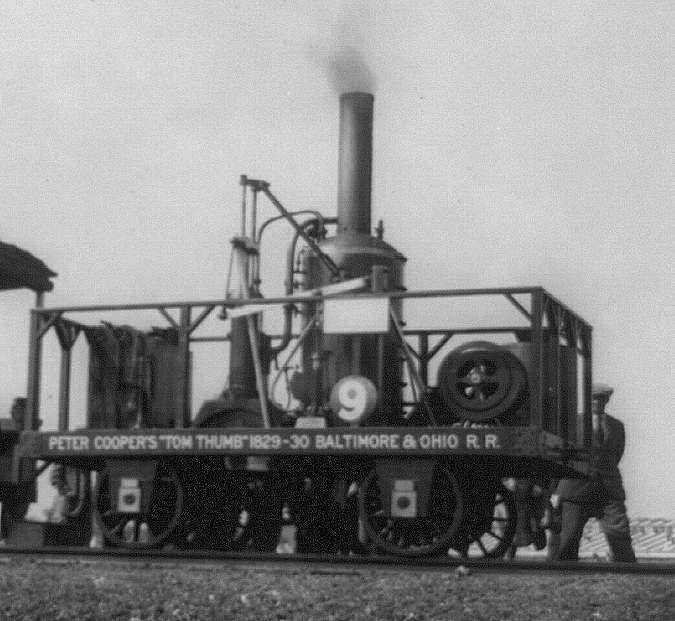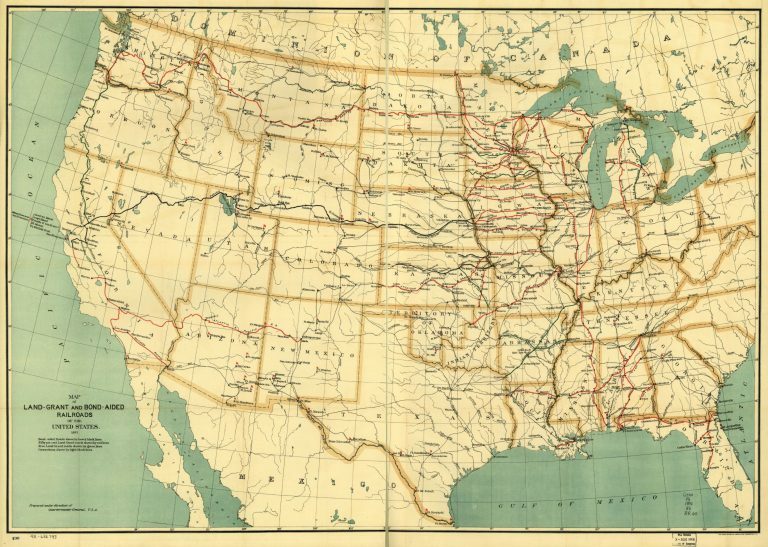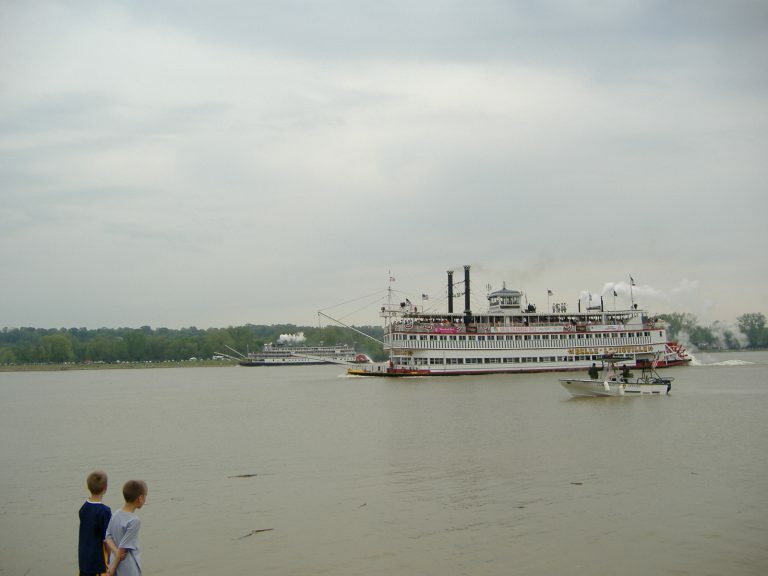A Brief History of Steamboats – The End of an Era

A Brief History of Steamboats: The End of an Era
by Ben Morrill, Visitor Center Site Manager
While steamboats revolutionized transportation in the early 1800s, another transportation revolution ultimately spelled the end of the steamboat. By the 1890s, trains and railroads were the most popular method of travel in America, while the emergence of automobiles in the early 1900s provided travelers with greater options to reach their destinations. As a result, steamboats soon became a symbol of a bygone era.

The Emergence of Railroads
The development of practical, functioning steam engines in the 1700s had an important impact on the creation of not just steamboats, but railroads as well. As early as 1764 railways called “gravity roads” were developed to help move heavy items and goods. Throughout the late 1700s inventors like John Fitch began demonstrating the power of steam engines as propulsion systems, and following Robert Fulton’s successful steamboat demonstrations, engineers and inventors began looking for new ways to use the power of steam.
Around the same time steamboats began appearing on the nation’s waterways, early trains were being developed and tested on land. Between 1810 and 1826 early systems like the Leiper Railroad and the Granite Railroad demonstrated the practical applications of railroads, leading to the
expansion of rail lines in the eastern United States and the eventual development of the Tom Thumb, the first steam powered locomotive.
While steamboats could take advantage of natural transportation routes giving them an advantage over early railroads, miles of track still needed to be built. But thanks to land grants from the United States government, by the 1860s more than 30,000 miles of operational track existed in the US, more than triple the amount that existed in 1850. Following the end of the Civil War, westward expansion only fueled the growth of rail lines, marking the beginning of the end of the “golden age” of steamboats.

How Railroads Rose in Popularity
The completion of the first Transcontinental Railroad in 1869 now meant that the United States was connected coast to coast by railways. Rail lines continued to expand across the country throughout the late 1800s, allowing them to reach inland cities and towns steamboats couldn’t. By 1916, more than 254,037 miles of track stretched across the United States.
Trains were also a lot safer and less expensive than steamboat travel. In the late 1800s most workers made around $20 a month, and with long trips costing as much as $8.50 for a first class cabin, many travelers were only able to afford
deck tickets, often sleeping outside with the cargo. Additionally, river hazards like sandbars, snags, and the threat of unexpected boiler explosions made steamboat travel dangerous, making trains a safer alternative for many travelers.
By the 20th century, trains and automobiles made steamboats all but obsolete, and in the 1950s many shipping companies switched to more efficient and powerful diesel engines. In the later half of the 20th century few steamboats remained on the nation’s waterways, often providing river trips to allow travelers to experience the glamor of the steamboat era. Ships like the Belle of Louisville and the Delta Queen earned their legendary reputations this way, becoming some of the most famous boats on the river. While few steamboats travel the rivers today, they have become an important part of the history and culture of the Ohio River.

